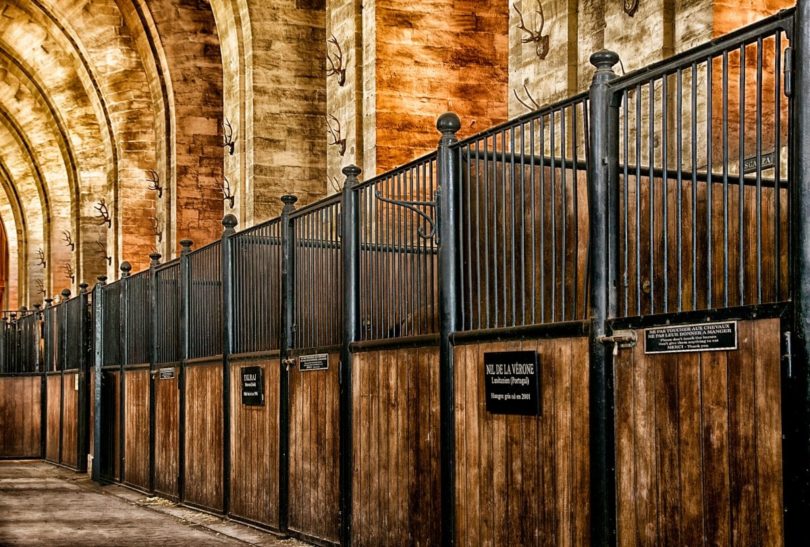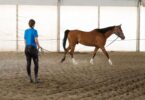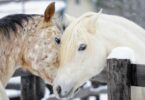Stall size and design are important considerations, whether you are evaluating boarding facilities or looking to build your own horse barn. (Grab a copy of Cherry Hill’s book on horsekeeping if you are.)
Ideal stall size varies depending on the horse you plan to house in it. As a rule of thumb, though, a 1,000-pound horse should have at least a 12×12’ stall.
This allows enough room for a typical horse to turn around, lie down, and get back up comfortably without becoming cast (i.e. stuck wedged against the side of the stall).
Key Considerations
Turnout: With adequate turnout, a 12×12′ stall will accommodate an average horse, such as a Quarter Horse, Thoroughbred, or Arabian. If your horse has limited turnout, a larger stall or a stall with a run is better.
Breed: A draft horse requires more space, such as a 16×16’ stall. A 14×14’ stall is suggested for larger Warmblood breeds. On the other end of the spectrum, mini horses would do fine in as small as an 8×8’ stall.
Baby on Board: If you have a mare and foal, a modular stall where the partitions are removable is a great option—when it is close to foaling time, simply convert a single 12×12’ stall into a double, 12×24’ stall. Mom and baby will have plenty of space.
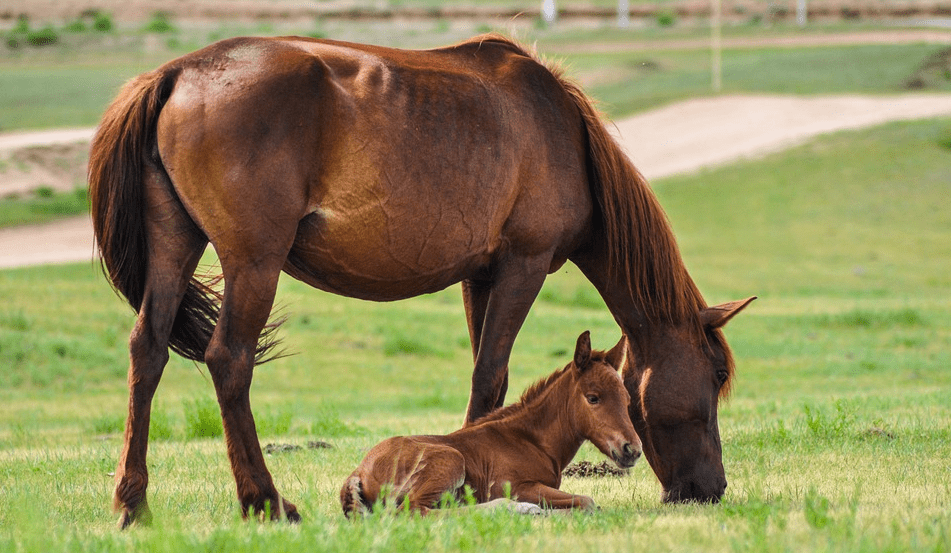
Mares and foals require larger stalls to stay comfortable and safe.
Height Matters
Stall length and width aren’t the only measurements you need to take into account. Ceiling height is another important consideration, as you don’t want your horse to accidentally hit its head.
A 10-12’ ceiling is recommended, with 8’ being the minimum.
Taller stalls also improve ventilation (i.e. air flow). Poor air circulation is a leading cause of respiratory illness in horses. Insufficient air flow causes a buildup of ammonia (from urine), dust, and even mold.
Should you stall your horse or not? Find out whether all horses need stabling.
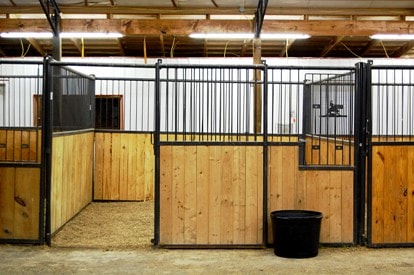
Sliding door to the aisle, solid lower partitions, good visibility, and good for ventilation. Ceiling height is not an issue here.
Access Point(s)
Another important structural design is the doorway to the stall. It should be big enough for the horse and handler to safely enter and exit.
An 8’ tall and 4’ wide door is ideal, with 7×3.5’ being the minimum recommended size.
Most stall doors either swing or slide open and closed. Sliding doors are preferred for interior aisle stall doors. Swing doors can work well between a stall and an attached outdoor run. (Just be sure you can latch them open or closed so they are not a safety hazard2.)
If you have a swinging door from a stall to an interior barn aisle, it should always swing outwards instead of into the stall1.
A door that’s divided into two panels is called a Dutch door. It’s a nice option that allows the horse more visibility because he can stick his head out when the top portion is open.
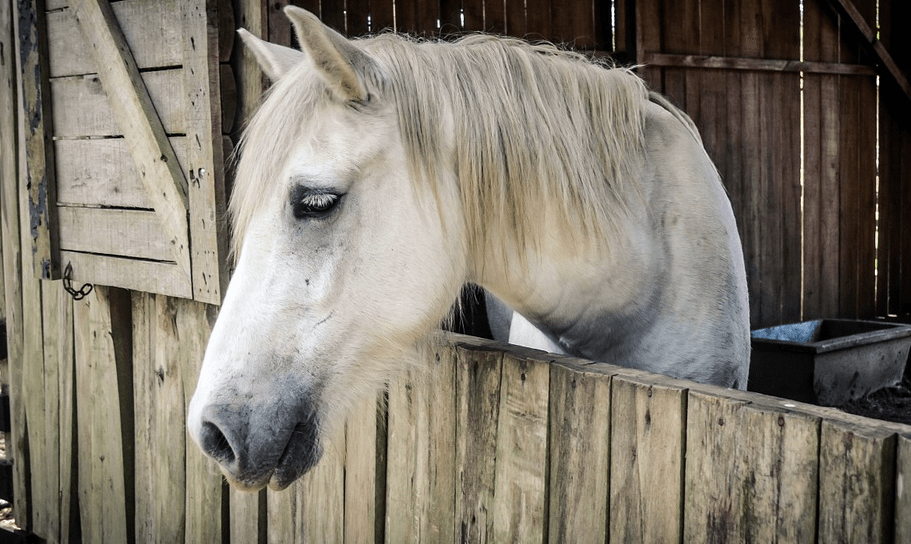
Dutch door latched open.
Note: Dutch doors work best at a private barn where the horses know each other. This design is not recommended at a show barn where different horses may be coming and going.
Safe and Secure
Last but not least, stall design directly correlates with overall safety. The space should be a comfortable and peaceful place for your horse.
Be sure to:
- Eliminate any sharp edges or surfaces (like a protruding nail) that could be a snagging point for skin, halters, or blankets.
- Fold door latches flat when closed and/or slide them out of the way so they don’t protrude into a door opening3.
- Ensure electrical cords are out of reach in the stall or aisles. (Trust me, if they can reach it, they will chew it!)
- If the stall has windows, add bars on the horse-side so glass can’t be accessed and broken.
- Confirm walls are smooth on the horse side; you don’t want your horse getting caught on a support beam while laying down or chewing on exposed surfaces out of boredom.
- Check automatic waterers are secured with no cords exposed.
With these basic guidelines in mind, your horse can be safer and happier in his stable. #homesweetstable
P.S. Enjoy this article? Trot on over to:
- Equine Shelter 101: Do all horses need a stable?
- What is a horse house called?
- Stay Put, Pony! Horse Stall Guards for Beginners
- 7 Best Boredom Bustin’ Horse Pasture Toys
- Horse Run In Sheds for Beginners (Cost, Size, etc.)
- Horse Hay FAQs: List of Types of Hay, What Hay is Best, etc.
- Food or Foe: What Do Horses Eat (And Why)
- How much weight can a horse pull? (You’ll be surprised!)
- Fact of Fiction: Do Horses Eat Meat?
- How Horses Sleep: A-Zzz Guide to Equine Rest
- Horse Lifespan 101 (Life Stages, Teeth, Senior Horse Care)
- Why Some Horses Wear Shoes (And Others Don’t)
References & Further Reading:
1. https://extension.psu.edu/horse-stall-design
2. https://stablemanagement.com/articles/the-basics-of-horse-stall-design
3. https://thehorse.com/152014/how-safe-is-your-barn/

